| Srl | Item |
| 1 |
ID:
130567
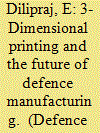

|
|
|
| 2 |
ID:
153822
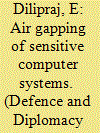

|
|
|
| 3 |
ID:
146558
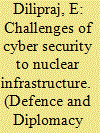

|
|
|
| 4 |
ID:
170797
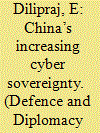

|
|
|
| 5 |
ID:
153168
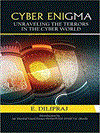

|
|
|
|
|
| Publication |
New Delhi, KW Publishers Pvt Ltd, 2017.
|
| Description |
xxii, 262p.hbk
|
| Standard Number |
9789386288578
|
|
|
|
|
|
|
|
|
|
|
|
Copies: C:1/I:0,R:0,Q:0
Circulation
| Accession# | Call# | Current Location | Status | Policy | Location |
| 059078 | 363.325/DIL 059078 | Main | On Shelf | General | |
|
|
|
|
| 6 |
ID:
128325
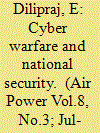

|
|
|
|
|
| Publication |
2013.
|
| Summary/Abstract |
In the wake of the 21st century, the cyber world to spread its roots deep in to the society and penetrated the lives of the people so much so that the internet became an indispensable part of the citizens' life, thus upgrading them to the status of netizens. Moreover technology in cyber space gained dynamism, increasing the population of netizens. This became possible in the cyber space not because all the citizens became technically sound but also because the cyber technology became more user friendly. Nevertheless, the highs of the liberty of express was readily available in the cyber space by virtue of the very low level of restrictions and legal barriers applies by the government of the countries in the cyber space.
|
|
|
|
|
|
|
|
|
|
|
|
|
|
|
|
| 7 |
ID:
158759
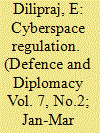

|
|
|
| 8 |
ID:
182172
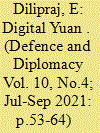

|
|
|
| 9 |
ID:
144499
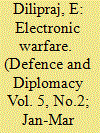

|
|
|
| 10 |
ID:
135525
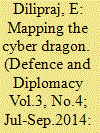

|
|
|
|
|
| Summary/Abstract |
Cyber- widely considered as the fifth domain of warfare- is a conflict ridden domain where actual war is rare case scenario but other forms of conflict are an everyday affair between the challenging players. Now, the question that arises is: what are the other forms of conflict in the cyber domain? The answer to this question in simple words is: since the cyber domain involves players ranging from individuals to nation-states, the various form of conflict in it range from cyber theft, hacking, cyber espionage, data collection through excitation, to cyber sabotage, cyber terrorism, cyber propaganda, cyber warfare etc.
|
|
|
|
|
|
|
|
|
|
|
|
|
|
|
|
| 11 |
ID:
158559
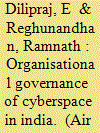

|
|
|
| 12 |
ID:
126260
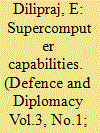

|
|
|
|
|
| Publication |
2013.
|
| Summary/Abstract |
Supercomputers, the monsters of the computing World, occupy enormous rooms and perform trillions of calculations per second. In general, a supercomputer can be defined as a machine with high computing performance that has extremely fast processing speeds which are employed for specialized applications that require immense amounts of mathematical calculation and logical analysis. A supercomputer that process data simultaneously.
The high capacity of such super machine is used for various types of scientific research like recreating the Big Bang, Understanding earthquakes, protein folding, bloodstream mapping, modeling of new diseases, Oceanographic modeling, predicting climate change, weather forecasting, recreating brain patterns, finding the God particle and other atomic and sub-atomic research. While supercomputers are constantly relied upon for performing the above mentioned high end complex civilian scientific research, they are also used almost at the same magnitude by different countries around the globe for defence related research. Therefore, this paper intends to study the role played by these computing giants in the field of defence and the capabilities of various countries possessing such technology.
|
|
|
|
|
|
|
|
|
|
|
|
|
|
|
|
| 13 |
ID:
137829
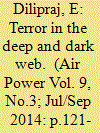

|
|
|
|
|
| Summary/Abstract |
Starting as a mere concept named “Galactic Network” by J.C.R. Licklider of MIT in August 1962, the ‘internet’ has in the past few decades revolutionised the way this world communicates. Having been technically nurtured in the Defence Advanced Research Projects Agency (DARPA) from early the 1960s to the late 1970s, the internet, i.e. the then ARPANET, has undergone various phases, starting with the sending of host-to-host messages with mere packet switching technology in extreme low speed (2.4 kbps – 50kbps) in 1969, to the advancement of the host-to-host protocol of ARPANET called “Network Control Protocol” (NCP) in 1970, to the introduction of ‘electronic mail’ service in 1972 for an easy coordination mechanism in ARPANET.
|
|
|
|
|
|
|
|
|
|
|
|
|
|
|
|